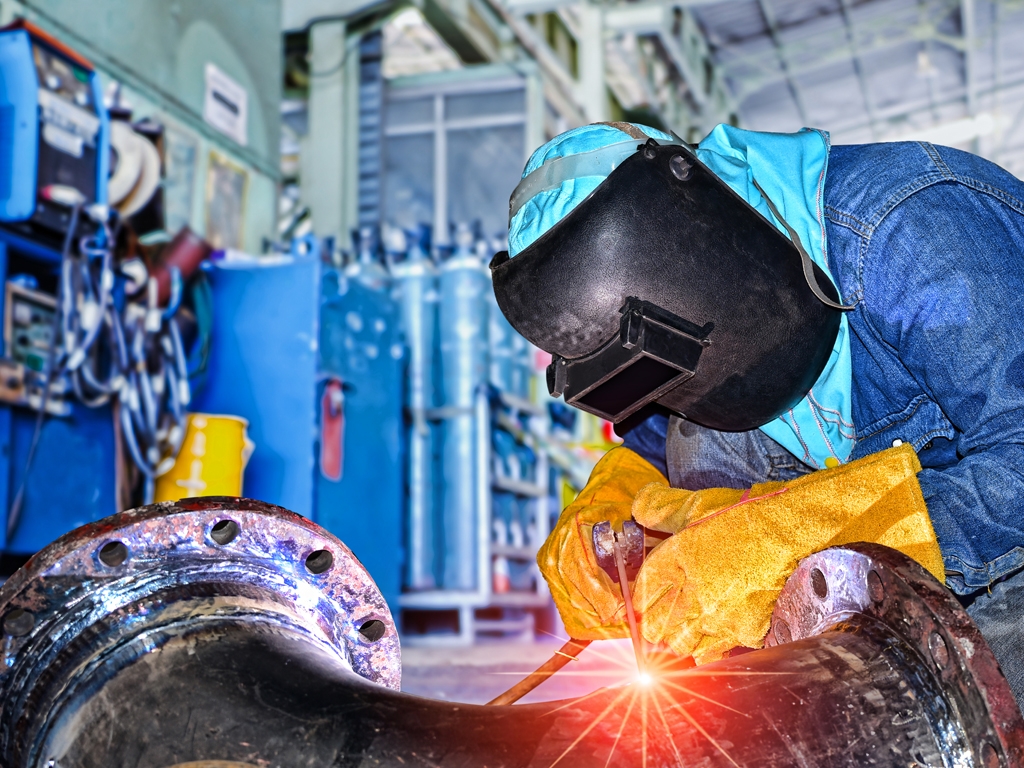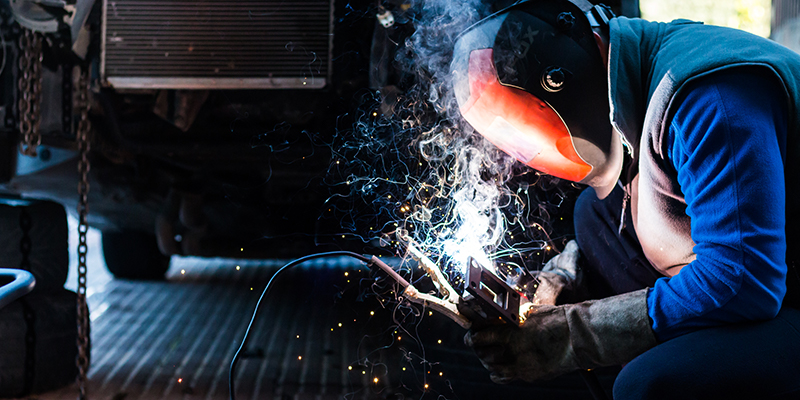All Concerning Welding: Trick Insights Into Techniques and Best Practices for Success
Welding incorporates a selection of strategies, each suited for details materials and applications. Recognizing these approaches, such as GMAW, SMAW, and TIG, is essential for attaining perfect outcomes. Additionally, the ideal equipment and security practices can not be overlooked. As prep work and fixing play essential duties in the welding procedure, grasping these components can substantially improve the high quality of the last item. What are the crucial aspects that guarantee an effective weld?
Recognizing Different Welding Techniques
Welding strategies include a selection of methods, each fit to specific applications and materials. Amongst the most typical techniques are Gas Steel Arc Welding (GMAW), Shielded Metal Arc Welding (SMAW), and Tungsten Inert Gas Welding (TIG) GMAW, likewise called MIG welding, is preferred for its speed and versatility, making it perfect for thin products. SMAW, or stick welding, is favored for its simpleness and efficiency in outdoor environments, especially with thicker steels. TIG welding offers accuracy and control, making it ideal for complex job and non-ferrous steels (Welding). Each technique has its distinct advantages and considerations, enabling welders to choose the very best approach based upon the job's requirements, material kind, and wanted end results. Comprehending these strategies is necessary for effective welding
Necessary Welding Devices and Devices
While different welding techniques call for details skills, the appropriate tools and devices are equally essential for accomplishing high quality outcomes. Essential welding equipment consists of welding makers, which differ depending on the technique-- such as MIG, TIG, or stick welding. Safety gear, including aprons, helmets, and handwear covers, assurances safety and comfort during the procedure. In enhancement, components and clamps assist secure materials in position, making sure precision in welds. Consumables like welding rods, wire, and securing gas are additionally crucial parts that influence the high quality of the weld. Tools such as cutters and mills facilitate surface area prep work and post-weld finishing, contributing to an expert end result. Spending in high-quality devices eventually enhances the effectiveness and efficiency of welding projects.
Security Practices in Welding
Proper safety techniques are necessary in the welding sector to shield employees from possible threats. Welders must put on appropriate personal protective devices (PPE), consisting of safety helmets with correct shading, handwear covers, and flame-resistant garments. Sufficient ventilation is important to minimize direct exposure to unsafe fumes and gases produced throughout the welding process. Furthermore, workers need to be educated in the appropriate handling of welding equipment to avoid crashes. Fire precaution, such as maintaining combustible products away from the welding location and having fire extinguishers easily available, are required. Routine examinations of tools and offices can assist recognize prospective threats before they cause mishaps. By sticking to these security methods, welders can develop a more secure working atmosphere and reduce threats related to their trade.
Readying Products for Welding
Preparing products for welding is a crucial step that greatly influences the quality and integrity of the final product (Montana Mobile Welding and Repair Belgrade). Appropriate preparation entails cleaning the surface areas to get rid of contaminants such as oil, dirt, and rust, which can jeopardize the weld. Strategies such as grinding, fining sand, or using solvents are frequently utilized to attain a tidy surface. Additionally, making sure that the products mesh comfortably is necessary; gaps can lead to weak welds. It's also essential to take into account the placement and positioning of the parts, as this will influence the simplicity of welding and the last result. Selecting the ideal filler material and making certain compatibility with the base steels is necessary for achieving strong, durable welds.
Tips for Achieving High-Quality Welds
Accomplishing premium welds requires attention to information and adherence to best techniques throughout the welding process. Proper joint prep work is necessary, guaranteeing surface areas are complimentary and clean from pollutants. Picking the ideal filler product and welding method based on the base metals is crucial for suitable bonding. Maintaining consistent traveling speed and angle while welding can stop defects and advertise harmony. Furthermore, regulating warmth input is essential; extreme warmth can result in bending and weakened joints. On a regular basis inspecting the welds during the procedure permits immediate changes if essential. Employing proper post-weld treatments, such as cleaning and tension relief, can enhance the longevity and integrity of the weld, ultimately making sure a successful result.
Fixing Typical Welding Issues
Welding often offers difficulties that can affect the high quality and honesty of the last product. Usual concerns such as porosity, irregular weld beads, and overheating can arise, each needing specific troubleshooting methods. Recognizing these troubles is essential for welders to enhance their skills and accomplish optimal results.
Porosity Issues Discussed
Porosity can frequently be forgotten, it remains an essential concern in welding that can endanger the honesty of a completed product. Porosity describes the presence of tiny gas pockets within the weld bead, which can lead and weaken the joint to early failing. This trouble typically arises from impurities, moisture, or inappropriate securing gas insurance coverage during the welding procedure. To mitigate porosity, welders should verify that the base materials are completely dry and clean, utilize appropriate shielding gases, and maintain regular welding parameters. Frequently checking the devices and setting can also help identify potential issues prior to they manifest in the weld. Attending to porosity successfully is essential for attaining solid, long lasting welds that meet quality standards.

Irregular Weld Beans
Irregular weld beads can significantly impact the quality and toughness of a completed item. Different aspects contribute to this concern, including improper traveling speed, wrong amperage settings, and inconsistent electrode angles. When the welder moves as well promptly, a grain might appear slim and do not have penetration, while moving too slowly can create excessive build-up. Furthermore, making use of the incorrect amperage can result in flux core wire either undercutting or excessive spatter, both of which compromise weld honesty. The welder's strategy, such as irregular lantern movement, can likewise result in unequal grain appearance. To mitigate these troubles, welders should concentrate on keeping consistent, regulated motions and making certain correct tools setups to accomplish harmony in their welds. Consistency is crucial to accomplishing strong and dependable welds.
Getting Too Hot and Bending Issues
Extreme warm during the welding process can bring about significant overheating and buckling problems, impacting the structural integrity of the work surface. These problems frequently materialize as distortion, which can jeopardize positioning and fit-up, making additional assembly testing. Elements adding to overheating include the selection of welding specifications, such as voltage and take a trip rate, in addition to the kind of material being bonded. To alleviate these issues, welders need to maintain regular travel speed and suitable heat input while monitoring the workpiece temperature. In addition, preheating or post-weld warm therapy can assist reduce stress and anxieties caused by rapid air conditioning - Montana Mobile Welding and Repair Welding. Routine evaluation and adherence to best practices are important in stopping getting too hot and making certain the durability and reliability of bonded frameworks
Often Asked Inquiries
What Are the Occupation Opportunities in the Welding Market?
The welding market uses diverse profession possibilities, consisting of settings as welders, educators, engineers, and assessors. Experts can function in production, building, aerospace, and automobile sectors, Extra resources gaining from strong demand and competitive incomes in various roles.
Exactly How Can I Boost My Welding Speed Without Giving Up Quality?
To improve welding rate without sacrificing quality, one should practice efficient strategies, maintain devices, maximize settings, and enhance hand-eye coordination. Regular training and looking for feedback can also significantly add to attaining quicker, top notch welds.
What Qualifications Are Available for Welders?
Various certifications exist for welders, including those from the American Welding Culture (AWS), the National Facility for Building And Construction Education And Learning and Research Study (NCCER), and numerous industry-specific organizations. These credentials improve employability and demonstrate ability effectiveness.
How Does Welding Influence the Characteristics of Metals?
Welding influences the residential or commercial properties of metals by altering their microstructure, which can result in changes in ductility, Get More Info solidity, and toughness. Warm input and cooling prices during the process significantly influence these material attributes.
Can I Weld Dissimilar Metals With Each Other?
